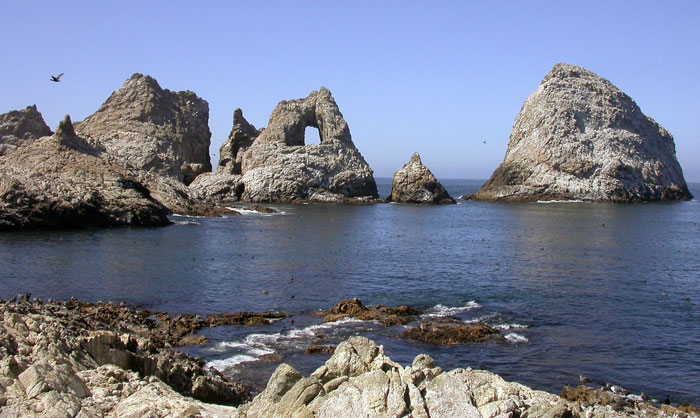On Tuesday, June 9, two national marine sanctuaries in California more than doubled in size. The newly protected areas will ban oil drilling and protect the marine habitat in a 4,581-square-mile area. Prior to the new expansion, the marine sanctuaries had a combined area of 1,811 square miles.
Gulf of the Farallones National Marine Sanctuary, which encompasses an area to the north and west of San Francisco Bay, will increase in size from 1,282 square miles to 3,295 square miles. The expansion moves its northern boundary roughly 62 miles further up the coast, from Bodega Bay to Point Arena. The neighboring Cordell Bank National Marine Sanctuary will also see its borders expand from 529 square miles to 1,286, reaching further into the offshore waters of Marin County to include Bodega Canyon.
The Farallones National Marine Sanctuary lies between the Monterey Bay National Marine Sanctuary and Cordell Bank National Marine Sanctuary. It was declared in 1981, and protects the waters off San Francisco, part of the highly productive California Current System. Within the sanctuary are the Farallon Islands and associated National Wildlife Refuge, the sanctuary protects the feeding grounds of the seabirds and seals that breed and haul out on the islands.
The two sanctuaries support a vast array of sea life including 25 endangered or threatened species, 36 marine mammal species, over a quarter million breeding seabirds, and one of the most significant great white shark populations on the planet. Within these marine sanctuaries, fishing and boating are allowed but oil drilling is not, and practices such as sewage dumping are strictly regulated. One aim of the sanctuaries is to prevent an oil spill of the kind that fouled Santa Barbara beaches in 1969.
The announcement of the expansion comes after years of work. NOAA considered plans and received public comment regarding sanctuary expansion in 2001.
Designation as a National Marine Sanctuary does not automatically prohibit fishing, and areas all are open to recreational and technical scuba diving.


